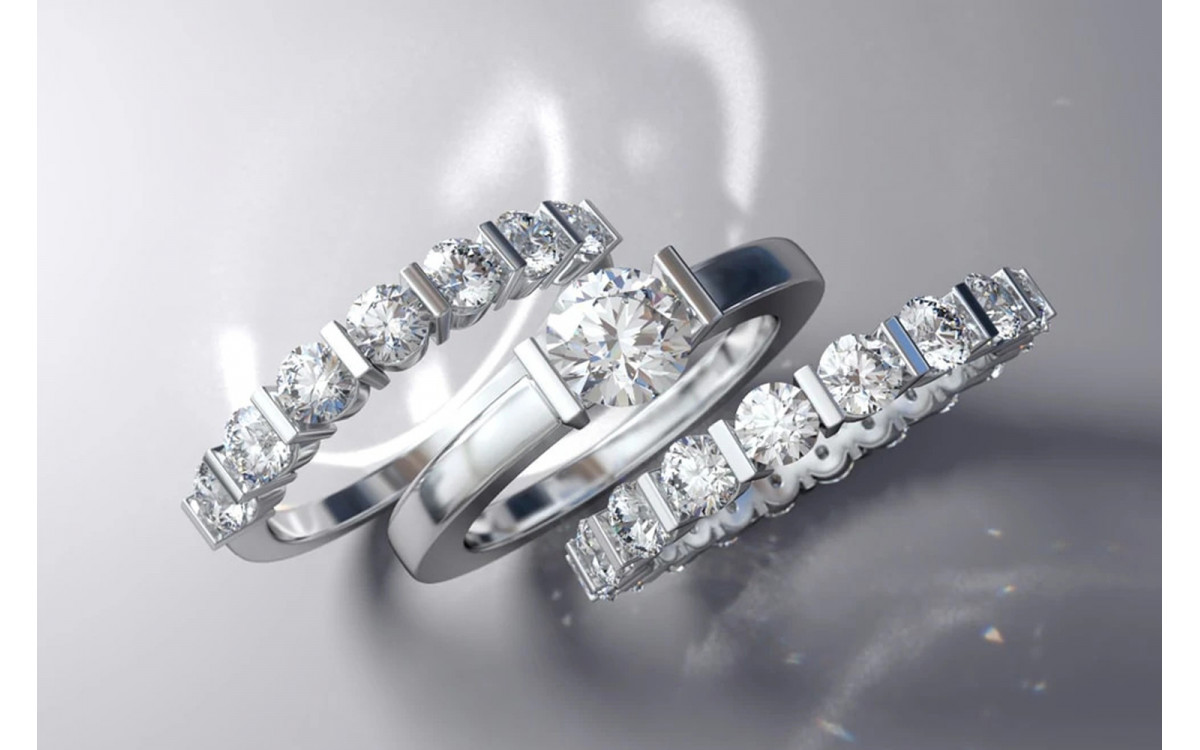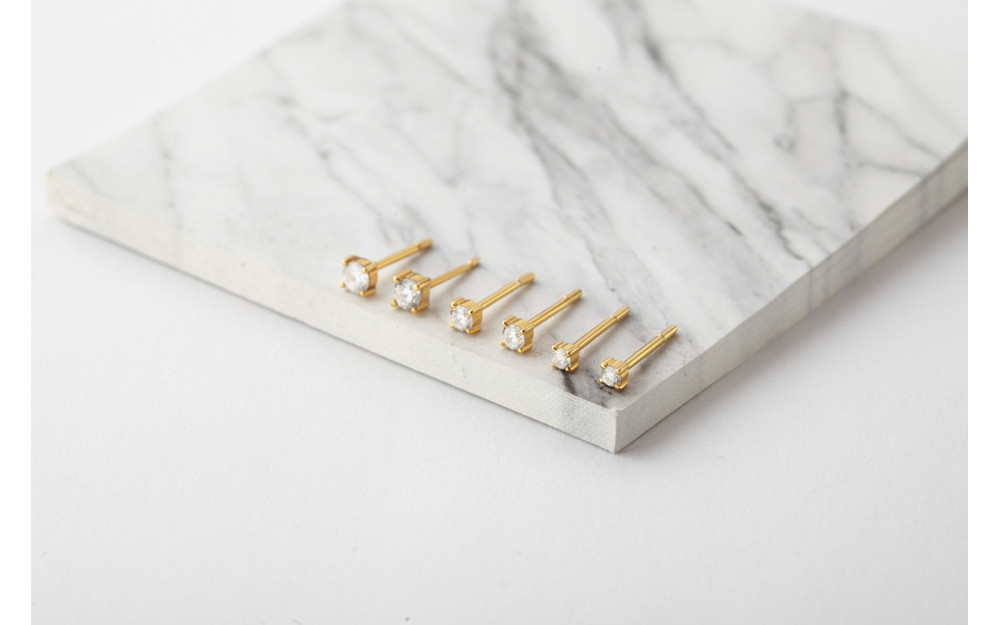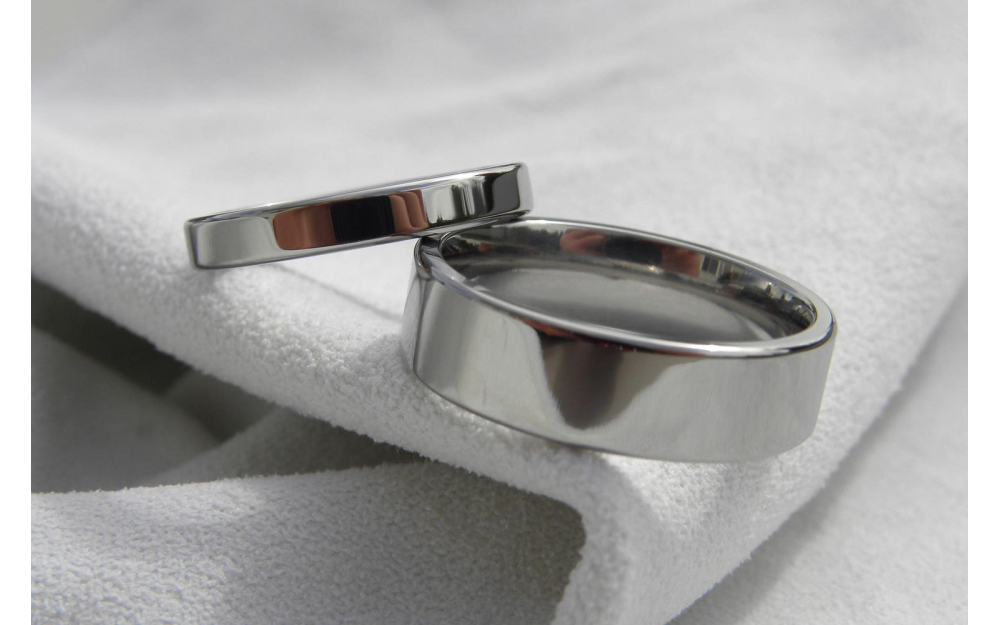One of the crucial steps in the creation of jewelry is the stone setting process, which involves putting gemstones in a metal casting. Numerous techniques are used to set a gemstone into a jewelry piece, which is often depending on the cut and proportion of the gemstone. Some of these tactics and procedures are well-liked and acknowledged around the world.
It's crucial for demi-fine jewelry brands to understand the strength and weaknesses of every type of stone setting technique to make decision on what to choose for their jewelry. We have covered all of that in this blog! Let's check it out!
Prong setting

The most frequent and well-liked way of placing stones into jewelry is prong setting, commonly referred to as claw setting. It is the simplest and least expensive way to place a gemstone. Additionally, it lets the gemstone get the ideal quantity of light, displaying it with all of its brilliance. All types of jewelry products use this setting design, although solitaire wedding and engagement rings predominate.
To safely hold the gemstone in a piece of jewelry, this setting frequently contains 3, 4, or 6 tiny, evenly spaced metal claws or prongs that are curved over the girdle. Similar in size and shape, these claws and prongs are affixed to the jewelry's central base, also known as the head or basket.
Round, emerald, princess, oval, marquise, pear, and trilliant cut are typical head or basket forms used in stone setting.
Channel setting

The setting method is known as "channel setting" involves placing gemstones side by side while holding their girdles between two parallel rails on each metal wall. Channel setting silver jewelry has a more streamlined look, as well as offers extra protection for the stones.
Channel settings are often used for larger stones, or for groups of small stones. They can be used with a variety of different stone shapes and sizes, and can be combined with other setting styles to create unique looks. Channel settings are generally quite durable, and can withstand everyday wear and tear. however, they may require more care than individual settings, as it can be difficult to clean the channel without damaging the stones.
Bar setting

Bar setting is a kind of channel setting in which tiny metal bars are visible in the spaces between the gemstones. The visual impact of the bar setting silver jewelry also differs from the channel configuration.
Bezel setting

One of the earliest methods for setting stones is the bezel setting, which is still highly well-liked because of its advantages. A gem is held in place by a bezel, which is a thin metal strip that is wrapped around it and soldered at the head. A correct balance must be struck from all angles when fixing the bezel. It offers a very firm grip and guards against chips and scratches on the pavilion, girdle, and edges of the gemstone. Although it can be used for any type of stone, this setting is most frequently employed for opal and other delicate gemstones.
Half bezel setting

Semi-bezels are a type of partial bezel that only completely encircles a gem's edges. The process for setting a stone in a semi-bezel is the same as one for putting a stone in a gypsy, with the exception that it is a little simpler to complete.
Pave setting

With a pave setting, a piece of jewelry has what looks like a diamond-studded surface all over it. In small holes that have been drilled out on the surface of a jewelry piece, the same-sized tiny diamonds are inserted. Typically, stones are arranged in a honeycomb pattern, closely spaced apart. Similar to the prong setting, pave settings have tiny, individually manufactured triangular claws that hold the stones very closely together and low so that they create a carpet of brightness across the entire surface of jewelry.
Flush Setting

Because it enables jewelers to build jewelry with stones that lie flush in the surrounding metal, flush setting is well named. This can be achieved by placing a single, huge stone on a wide, level surface, but this style of stone setting is most frequently used to place smaller stones to provide a spangled appearance. Flat or domed regions can get a scattered glitter from flush positioned stones.
So, which technique should demi-fine brands choose for their products? Each technique has its own benefits and drawbacks, so it’s important to choose the right one for each type of gemstone you use. Be sure to experiment with different techniques to see what works best for you and your customers.
If you need more information about jewelry manufacturing, don't hesitate to let us know! Contact us: [email protected] We are always willing to answer and quote of required.



